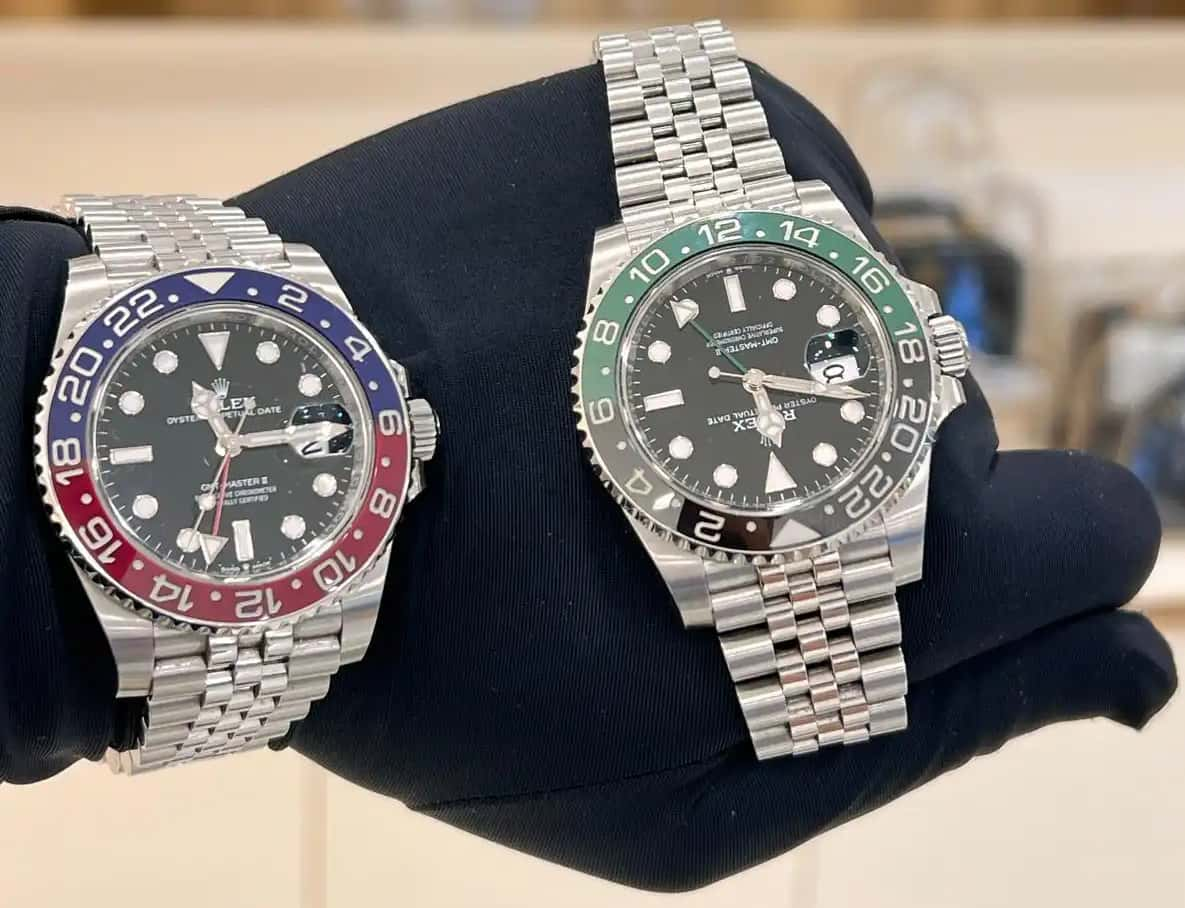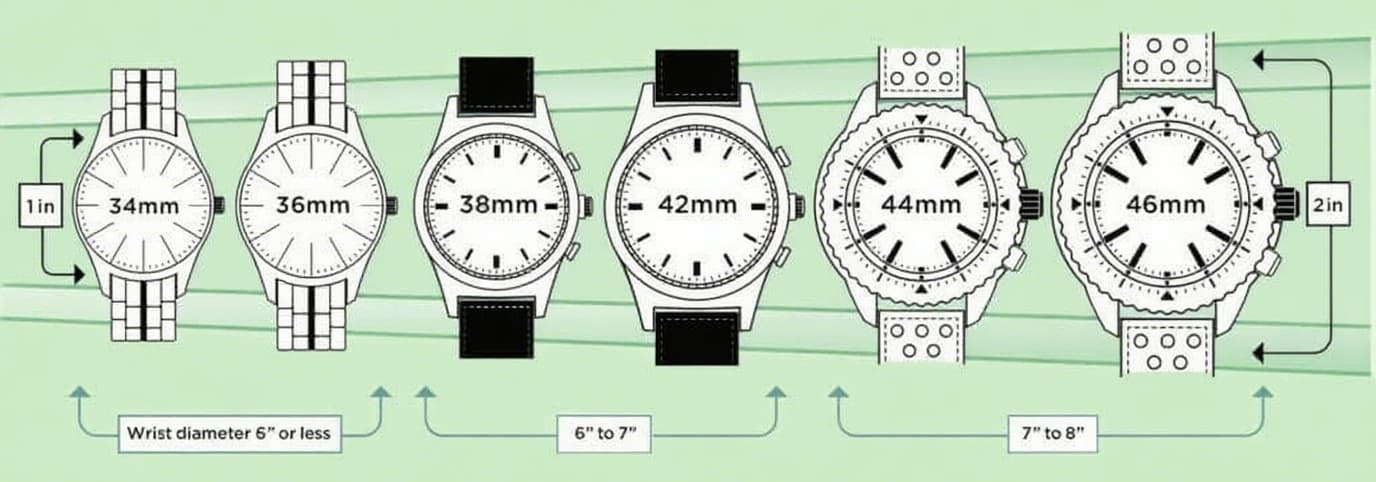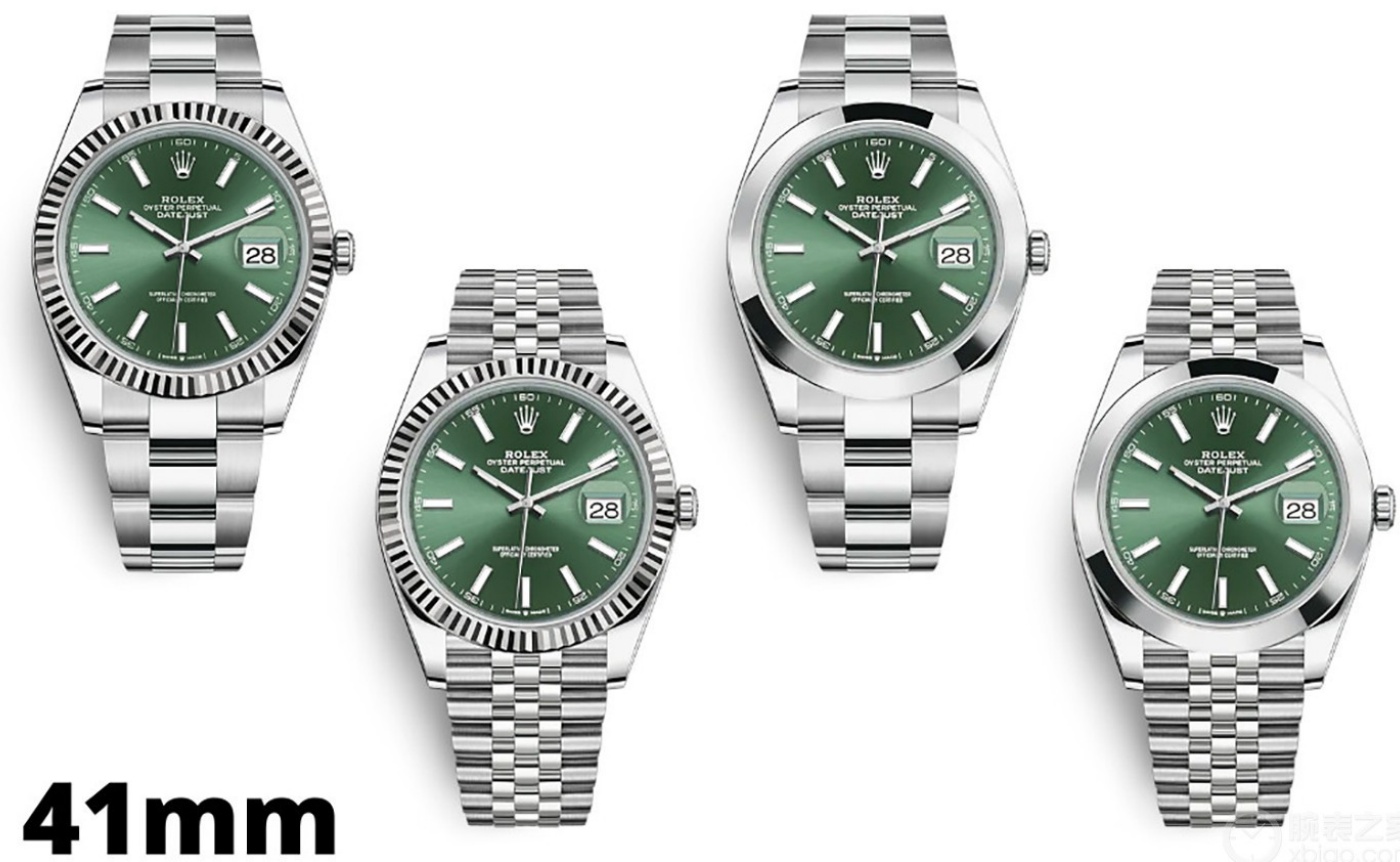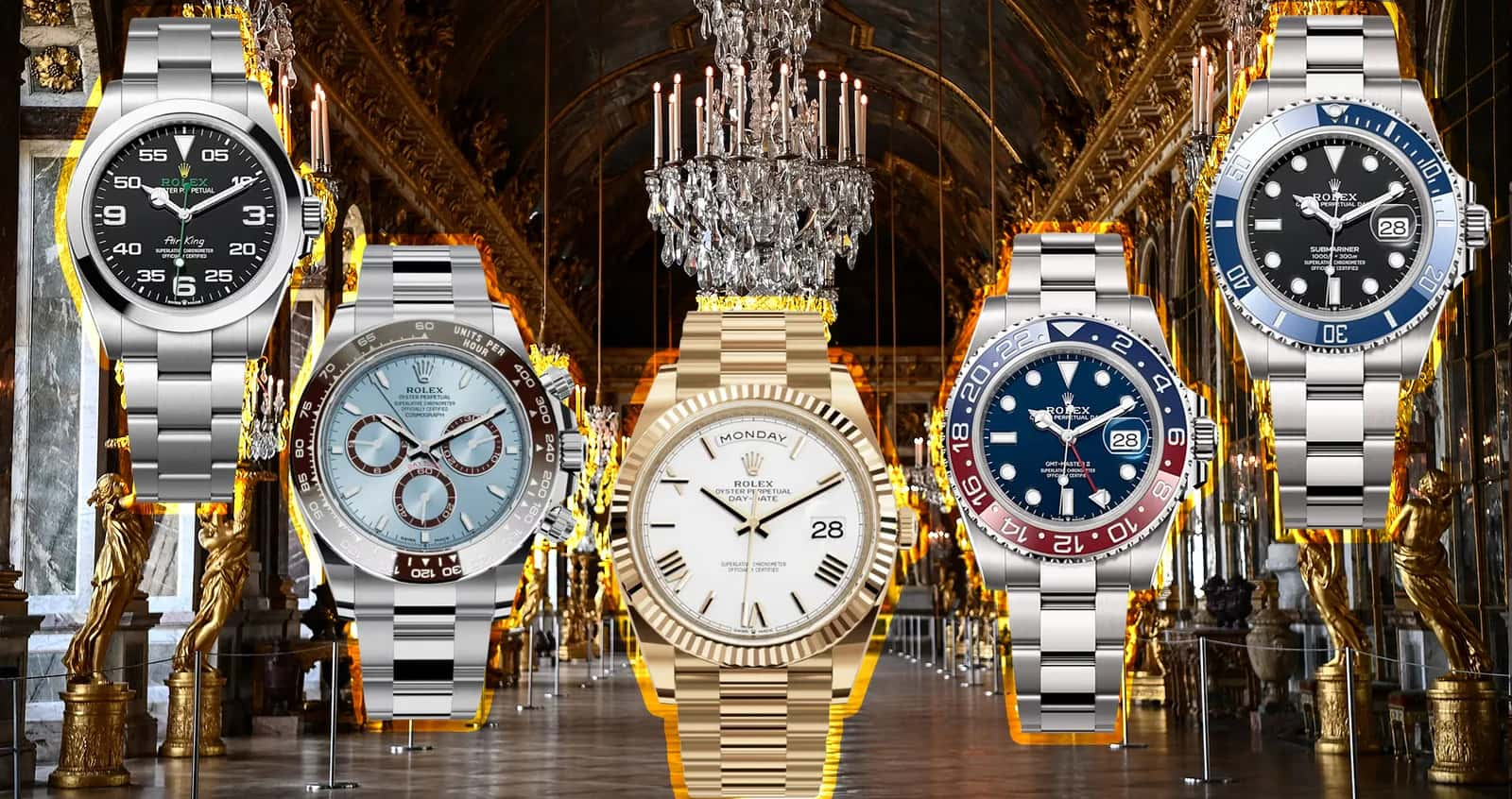How to Choose the Perfect Rolex Watch Size: Datejust 36mm vs 41mm

Ever ask yourself why a small difference of 5mm in size can change the entire aesthetic and feel of a watch? The decision between the Datejust 36mm and 41mm is more than just numbers; it’s an influence on daily comfort, personal style, and ultimately, resale value. A comfortable fit that accentuates your wrist and suits your lifestyle is a big deal, and that’s why getting it right is so important. Simply knowing what to pay attention to with regard to those sizes isn’t really enough — that’s no help! With an understanding of basic ideas of size, proportions, and overall wearability, you’ll have a simple and practical way to find the right Rolex watch for you, one that is aesthetically pleasing and will hold value.

Datejust 36mm vs 41mm: More than Just a 5mm Difference
While a mere 5mm may look small on paper, in wrist-size view we see how vastly different the watches feel on the wrist. The difference between the Datejust 36mm and 41mm can be summed up in two simple words that could appear in the title of a great magazine article: “Subtle Impact.” On your wrist, the Datejust watch proves that the small difference in dots on a technical scale actually has a giant impact on the feel and overall solidity while wearing. Wearing the 36mm feels small and classic, while the 41mm feels more broad and assertive on your wrist. Of course, the impact of wearing the watches goes beyond size and feel; each size watch will behave differently in various styles, given size perception is different in each watch. Understanding these physical size differences is part of truly determining your perfect Rolex size.
The proportions of the dials are a definitive part of the overall impact. With the measured proportions of the 36mm Datejust, its hour markers, logo, and date window are all sculpted to cohabit elegantly and in balanced proportions on the smaller watch face. This is where the Datejust ingenuity is captured: everything in proportion, keeping the vintage and classic feel. The 41mm dial has a more pronounced presence to it; it has a bolder approach in its placement: more translational markers and a larger date window create a picturesquely strident impact — a beauty in size that those who enjoy watches will gravitate toward. The dial differences, however, will impact how the watch reads (both close-up and at a distance), as well as the style preference of those who enjoy wearing larger watches.
The case and lugs also play a considerable role in establishing the characteristics of wearability and size perception. The 36mm case is sleek and less bulky; it hugs the wrist, while having proportionally short lugs (relative to size), and creates an all-day comfort wearability for the smaller wrist. The 41mm case, however, feels more stout and full, while the lugs are naturally longer to brace the wrist. This case will definitely feel more expressive and comforting; however, it might overwhelm a slim arm. These key design elements create significant comfort, while simultaneously influencing how the Rolex “sits” during a day and repeated wearability; not to mention, both comfort and sit will also affect the aesthetic attributes of a stylish and authentic Rolex.
The wider state, width, and balance of the bracelet also beg to be recognized in defining the characters of the two sizes. The Oyster bracelet worn on the 41mm is a broader and sportier bracelet style that matches the broad-centric appearance of the case and provides a rugged, almost masculine characteristic. This size often looks and feels stronger, with a bulkier presence everywhere we style wearers. The 36mm still has an option of a sportier bracelet, but is more common to find on the more bustling Jubilee. The Jubilee links are a touch finer in style compared to the Oyster, despite being a traditional Rolex bracelet, and tend to look cleaner, or more elegant in style with the more slim case and overall watch appearance. Depending on your style preference, as well as your intended wearability and occasions, you should determine which bracelet style you prefer — or buy both to match whichever watch confidence you prefer: dressy or sporty.
Everyone loves to see comparison photos so you can see the subtle, yet bold differences. Side-by-side images of the watches really clarify how proportion influences wrist presence. The 36mm looks and feels timeless, while the 41mm looks impressive with size, boldly. These photos assist you in evaluating which size is more appropriate (and fits within) the shape of your wrist style goals. Seeing the watch in context, a purchaser or prospective buyer can build confidence in any Rolex wrist size decision.

The Golden Rules for Size Selection: Wrist Measurement & Proportion
When selecting your Rolex size, it is important to get an accurate measurement for your wrist, but it’s much more important to keep wrist width in mind when deciding on size. Many users measure wrist circumference, but that only measures wrist length and does not measure how wide your wrist appears. The width—meaning the distance from the wrist bone across the widest part of the wrist—is what determines how a watch sits and looks on the wrist. A wider wrist can support larger diameters without the watch appearing oversized, whereas a narrower wrist prefers smaller case sizes. By using wrist width, the choice of Rolex sizes can be made to better match a user’s own natural proportions and comfort.
Measuring wrist width accurately is straightforward, using only some common tools and methodical observations. Measuring across the wrist bone at the widest part of the wrist can be done with a caliper or with a ruler. You may even want to take some photos as you measure to ensure continuity and clarity in your measurements. Refrain from using a tape measure as it wraps around tendons and muscles, which adds to the inaccuracy of measuring. Width is the only fixed physical frame your wrist sits in. It is best to measure your wrist width when your wrist is in a neutral position with your palm facing up. Accurate measurements will give you a good foundation for applying sizing approaches later.
The “Golden Ratio” is a strategic approach that has a scientific rationale in matching watch size to wrist width. Ideally, the watch diameter should fall between 60% to 70% of the wrist width in mm to balance both comfort and aesthetics. To clarify, if your wrist is 60mm across, the best wrist-size watch would fall between 36mm and 42mm. Again, this will help avoid a watch looking too big or small on the wrist; it will assist in ensuring that the Rolex sits on the wrist in a natural way with a proportionate look to the watch, ultimately adding to the overall comfort and style of wear.
Wrist geometry shape will also play into what Rolex size will be ideal and best. Flat wrists tend to hold watches to look larger, so flat wrists may do better with slightly smaller sizes or models with short lugs. Round wrists usually have a more infinite approach with surface area and can allow the watch to sit larger without it overpowering the wrist. Geometry will also have an impact on lug positions and how the case will sit, thus taking geometry into wrist width allows for a balanced and comfortable wrist fit and appearance, so you can widely showcase any size Rolex.
Who Fits 36mm? Who Fits 41mm? Lifestyle & Personality Matching Guide
The 36mm Rolex Datejust is for those who appreciate classic elegance and subtlety. It has a vintage aesthetic, and it is very complimentary for business and professional settings. Oftentimes, those with smaller wrists find that wrist size much more appealing, as it doesn’t dominate the wrist or appear cumbersome. The small stature of the watch allows it to fit comfortably upon the wrist and slide neatly under the cuff of a dress shirt with ease. This style of watch is beneficial for business-oriented individuals with a more conservative style. This watch speaks to the person who values classic design over the gaudy, comfortable with being sophisticated without standing out.
The 41mm Rolex Datejust appeals to a different individual; this watch is for people who like a wardrobe that has more sporty and bold interest to it. The size is intended for individuals who desire their watch to create a suggestion, accompanied by a lifestyle filled with casual events and experiences. This watch is much more appealing for individuals with wider wrists, as it will appear much more dynamic upon the wrist. The 41mm generally signals contemporary appeal, in confidence and style. If you are an active person who participates in adventures and just wants a durable watch with flair while you are participating in adventure, this size will appeal to you.
Individual experiences from real users will also affect your decision for Rolex size. For example, a marketing executive with a wrist size of 6.2″ chose the 36mm Datejust due to its classic look as it fits with their suits. In contrast, a creative freelancer, who measures 7.5″, suggests the 41mm for its presence while in a casual environment and its versatility. These accounts reveal that wrist size plays a critical role, as do profession and personal style. Experiences from Reddit and Quora are a great example of the confidence that comes through listening knowledgeably—practical decision-making that has been made as opposed to stepping out blindly in faith toward a size.
The wrist size to consider in connection with your personal styling and everyday needs. Therefore, if you wear tailored shirts on a regular basis, a smaller watch would provide better comfort and elegant style without catching on the cuff. Individuals with active social lives and casual wardrobe styles may prefer a size with a bolder look and thickness. Additionally, there is also a personality factor to consider. A reserved person may consider a 36mm watch more fitting to wear, while an outgoing person would certainly be more comfortable with a larger dial for a confident presence. Ultimately, deciding on a Rolex size is a balance between lifestyle, comfort, and self-identity expression.
Datejust 36mm vs 41mm in Full Data Showdown
The key specifications show what’s different between Datejust 36mm and 41mm watches. The 36mm has a total diameter of exactly 36mm, and the 41mm has a total diameter of 41mm, and you can definitely feel the wrist presence. Thickness is slightly different too, as the 41mm tends to feel more substantial. The weight is also different: generally speaking, 41mm watches are heavier, and this can certainly feel different on the wrist. The 41mm also has the advantage of having larger markers and a larger date window, which contributes to better legibility. The widths of the bracelets also vary, and a 41mm watch will have a wider bracelet than a 36mm. When it comes to comfort, that ultimately depends on the person, as in some cases, wider people may find the lighter 36mm watch more comfortable for the occasion.
In order to simplify this decision process for potential buyers, we can also summarize what a visual effect and wrist size chart would look like. For shoppers with a wrist size of about 6.5 inches or less, the 36mm Datejust is going to fit the person naturally, as it will naturally balance a person’s wrist without looking out of balance or overpowering. On the other side of the spectrum, for shoppers with at least 7-inch wrist sizes or a wider wrist type, the 41mm Datejust is the best fit, as it should fill that wrist appropriately and look just right. I cannot stress enough how much this visual balance means when it comes to a watch looking “right” or “not right” when you wear it. It provides a sense of comfort for the wearer—knowing that the watch occupies the wrist space in size appropriately, rather than pinched and cramped up or oversized. A visual effect and wrist fit chart ultimately helps simplify the complexity of sizing watches by showing clean wrist width visuals and where you fit based on your wrist width.
In general, the resale value positions both the 36mm and 41mm well for the customer, as it depends on the regional market, but both are popular sizes within the resale market. The 36mm Datejust continues to be a watch in steady demand due to the design’s classic appeal, while it’s also a versatile watch for both collectors and users alike. The 41mm may still attract customers with, or who are looking for, more of a statement piece, and is trending more in the urban and youth-focused sizing trends market for Rolex watches. Both sizes are retaining value well, but what trends are occurring in your region may matter to you as you consider resale value. That small note matters both in long-term ownership experience and finding the market to accommodate your initial fit.
As you might guess, the target audiences are also quite different based on the sizes. 36mm Datejust watches are mostly for business professionals, vintage style lovers, and those who prefer a classic style or vintage watch style more subtle on the wrist. The 36mm is lightweight, easily fits into formal occasions, and is very comfortable for daily office wear. The target audience for a larger, 41mm Datejust watch might attract the trendsetter, or the person who is more active—like a go-getter with their style—or they tend to wear their watch as a more casual item. Or simply, just for people who want more of a visual impact of some kind. Those people living an active life or social lifestyle with more social interactions may find the build and look of the 41mm aesthetically pleasing and appreciate it that way in terms of durability as well. This distinction in attendance ought to similarly align a Rolex size relative to the lifestyles generally, as people want their watch to represent a part of their identity rather than a tool for reference.
Comparison photos provide an instant and straightforward way to see what’s different in looking at a watch. A side-by-side photo clearly shows the watch size difference: the 36mm with a smaller dial and slimmer bracelet will look just right on a slimmer wrist. The design line of the wider 41mm dial and thicker bracelet will present power and presence on broader and wider wrists. In both ways, comparison photos allow potential buyers to make informed choices about size, as they’re able to visually see differences rather than just specs. In this way, visuals can often help clarify what a watch will wear like and feel like, which helps buyers become more confident in their potential Rolex decision along with specificity in taste.
Busting the Top 5 Myths About Rolex Sizes
Myth 1: Larger watches are always more desirable and valuable
Just because it’s a large Rolex, don’t presume it has more value or is more desirable. In fact, many collectors of the brand gravitate towards classic sizes, such as a 36mm, which is all about timeless elegance and versatility. Larger watches do attract attention, but their size does not imply worth, desirability, or style.
Myth 2: Women shouldn’t wear 41mm watches
Watches do not operate under gender conventions. Many women wear the 41mm watch style merely for the wrist presence and statement-making. Trends change with time, but individual style does not. More and more women are wearing 41mm Rolexes, which fit smaller wrists nicely. Not everyone will love a trend, therefore it makes sense to widen the scope of fashion and wardrobe; women can now wear these empowering watches without the watch being dictated by gender.
Myth 3: 36mm is obsolete
The 36mm Datejust has been a pivotal part of the Rolex brand for decades. The 36mm size looks great at many different angles and is a classic proportion suitable to many styles. Certainly, elegance never ages, and the 36mm retains its charm, with a balanced size and a design that is always relevant. Classics never go out of style.
Myth 4: Size affects the accuracy of a Rolex watch; a larger case will throw off accuracy
Movement inside the watch is the determining factor in how accurately the watch keeps time; size is irrelevant. Rolex watches are known for accuracy regardless of case size. Whether it is a 36mm or a 41mm, there are lots of exciting features of craftsman SKU, responsive movement that ensures incredible performance. Case size may affect appearance, but not movement reliability.
Myth 5: A 41mm is more comfortable
Comfort is derived primarily from the way the clasp and bracelet are built. Perhaps to a slightly less important extent, size then becomes secondary. A properly constructed 36mm can feel light and less obtrusive, which especially smaller wrists tend to prefer. Likewise, an appropriately fitted 41mm can be quite comfortable depending on both fit and style of the bracelet. In conclusion, comfort is subjective, complex, and nuanced.
FAQ: Everything You’re Wondering About Rolex Sizes
Is the Datejust 41mm a true 41mm?
The Datejust 41mm is not a true 41mm. Rolex often rounds up, and the actual case diameter is a fraction smaller. This helps the watch feel more comfortable to wear, preventing it from being too oversized on the wrist when wearing it.
Does the 41mm Submariner sit the same as the 41mm Datejust?
Although both watches are considered 41mm, the Submariner has a different shape and is thicker than the Datejust. The Submariner has a thicker case and a sportier aesthetic, which makes it feel more robust and a little bit heavier. On the other hand, the Datejust 41mm has a distinctly sleek and refined look more suitable for dress or casual wear.
How does the resale value of the 36mm Datejust do?
The 36mm Datejust has a very strong resale value because it is timeless. Collectors love this size because it is a classic size with fantastic proportions, and some unique or vintage size is bound to appreciate. The demand is consistently present, especially for those looking for watches that are a bit dressier and versatile.
Do dial colors make sizes look larger or smaller?
Yes, the color of the dial can affect how large or small the watch appears. Light colors like silver and white will generally make the watch look bigger because they carry light. On the other hand, dark colors like black or blue make the watch seem a little smaller because the color absorbs light, which makes the watch feel smaller in person.
What is the best size for smaller wrists?
The smaller wrist generally fits better with the 36mm size. It has balanced proportions without being too overwhelming on the wrist. That being said, those whose wrists lean toward the smaller side may want to opt with the 41mm if style and presence trumps tradition in their eyes. Comfort and aesthetics are paramount in the decision-making process.
Can Women Wear Either Size Comfortably?
Both sizes can be worn comfortably by women, as long as it accommodates the wrist width as well as their taste in size. 36mm is usually perfect for slimmer wrists with a touch of subtle elegance. Women tend to gravitate toward the 41mm because it offers a bolder look and eye-pleasing accessory without being unwearable.
How Does Size Impact How It Worn Daily and Comfort?
Size does play a role in how a watch moves and feels while being worn during different activities. A smaller watch is lighter and isn’t intrusive while worn under sleeves. A bit larger watch case offers a little heft, but more readable. The size ultimately wants to align with your daily activity and comfort and practicality.
What Size Look Best Under a Shirt Cuff?
In general, a 36mm Rolex size fits under most tighter shirt cuffs more easily. It’s sleeker and won’t catch or bulk under the sleeves. When wearing a 41mm Rolex size watch, you’ll want to wear pants with looser toning at the cuff or make sure any casual shirt is not tight fitting to the arms to accommodate the larger size. The size might limit the types of formal outfit combinations that can be worn due to room left for an oversized case.
Are Larger Case Sizes Harder Dress Formal?
Dressing formally can be more of a challenge with larger case watches, and especially with tighter sleeve cut clothing. As an example, the 41mm watch size creates boldness when worn and might clash with a conservative tailored shirt style. The 36mm bracelet watch is more widely accepted in formal situations since it’s an understated classic in the opinion of most people.
Does Size Matter for Maintenance or Durability?
The size does not matter in terms of maintenance. Both sizes rely on Rolex precision engineering. How durable a Rolex is relates to how it was made and what materials were used to create the piece. How the piece is worn is the most important factor for how long any Rolex will offer reliability. Regardless of size, a little care goes a long way with any 36mm or 41mm Rolex watch. Each will provide years of reliable time and durability.
Conclusion
The overall story of what size Rolex a person chooses will boil down to three main factors in the final decision. How it looks on your wrist, the golden rule about the diameter being strategy with wrist width, and ultimately your lifestyle. These three items will help to determine balance with style and presence with comfort.
When taking all three factors into account, you can now ensure the Rolex you choose fits your body, style and needs for everyday. Whether you gravitate more toward the classic 36mm or the statement of 41mm, there is nothing more important than choosing the right size for how you want the watch to look and fit on your wrist.
Will you wear a Rolex that’s elegant at 36mm or commanding in the boldness of 41mm? Take a moment to share your winning decision and story, and join in on the conversation for to help inspire others in the journey to finding their watch.


